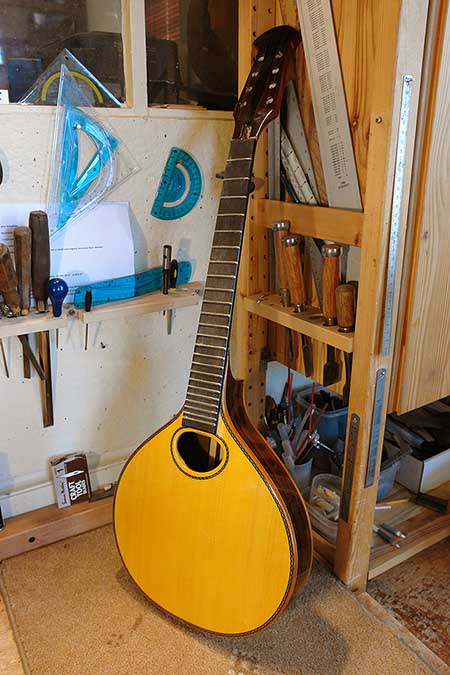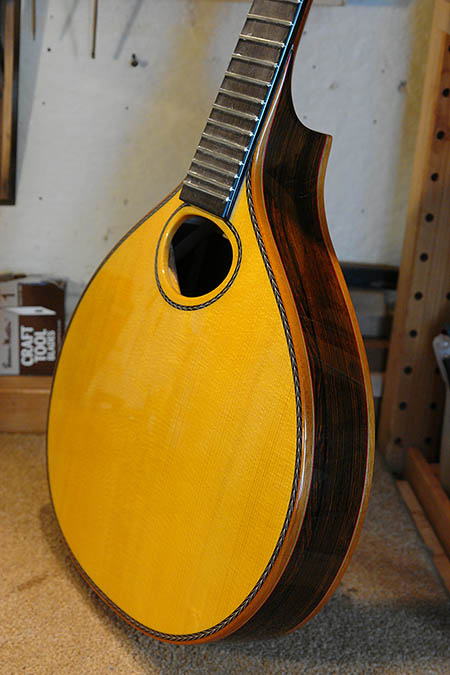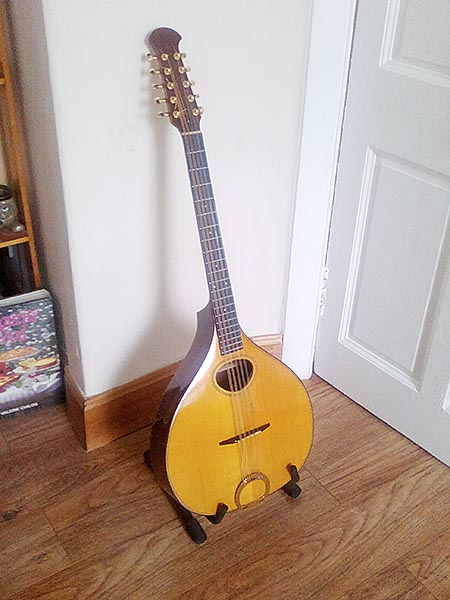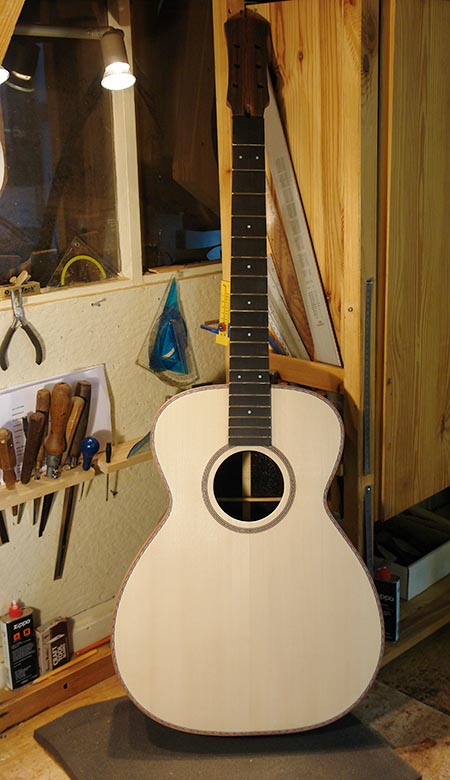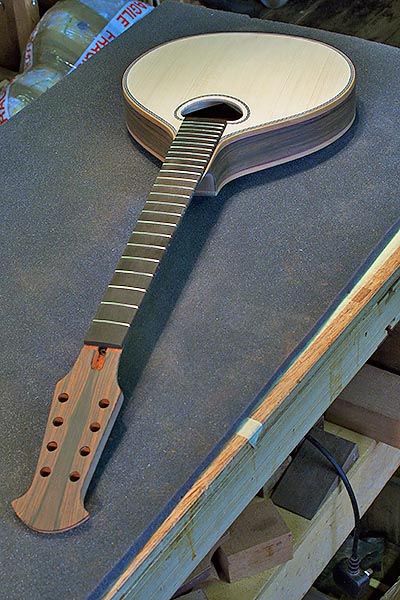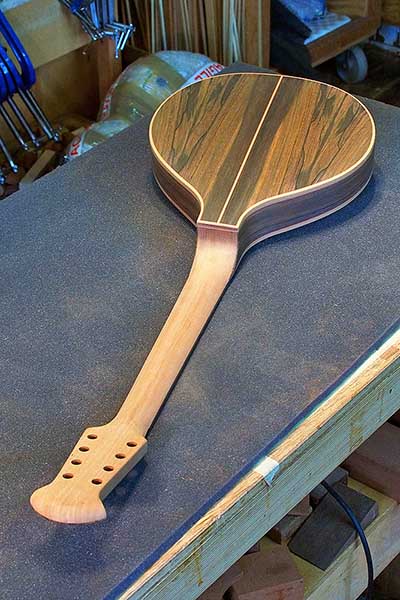Filming with Martin Simpson
Today Martin Simpson arrived from Sheffield to collect his new mandola.
Martin was also filming part of a Radio (!) 2 show for Trevor Dan. Trevor and camera men John and Tom were in my workshop for nearly three hours, filming Martin playing and talking about his Martin Simpson Signature Sobell.
They also shot footage of the workshop and me whittling in the background, some of which might be used behind the music.
I was intrigued to discover that these three hours will be edited down to exactly three minutes of the finished program. This program will be available in the UK on line and on the red television button while BBC 1 is playing. I don’t really know how this works, but hope to have a link when it’s out.
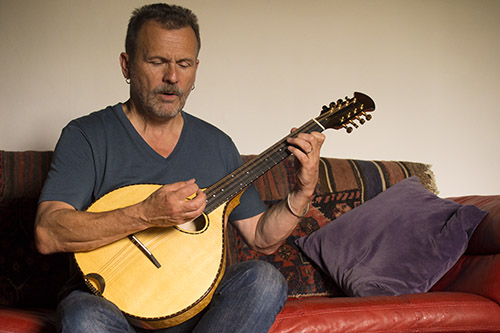
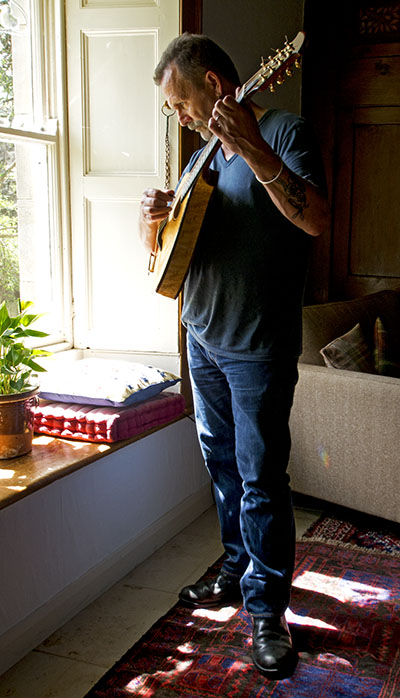
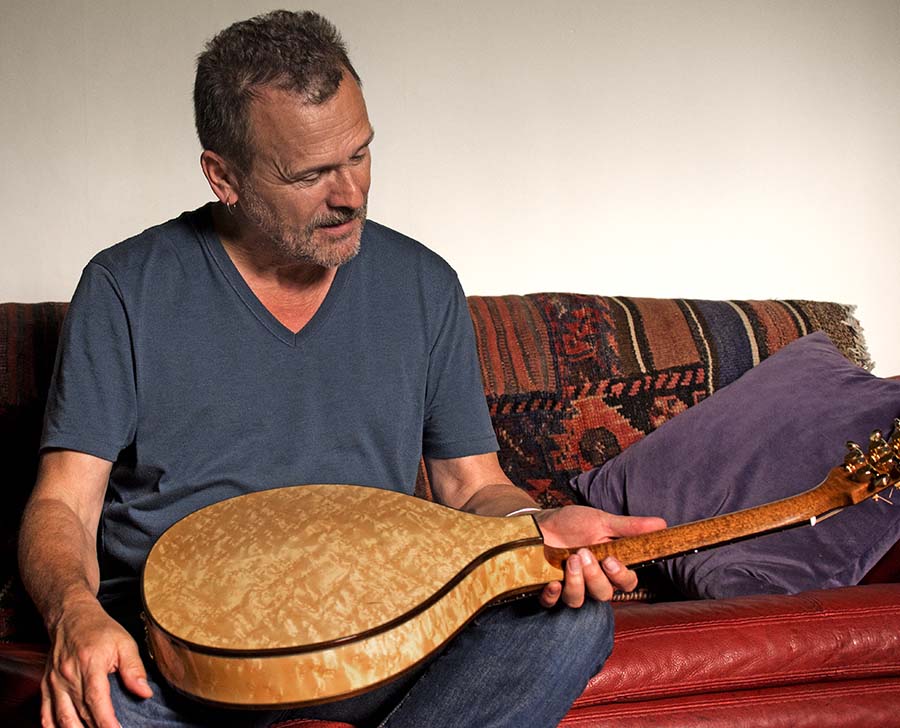
Martin with new mandola
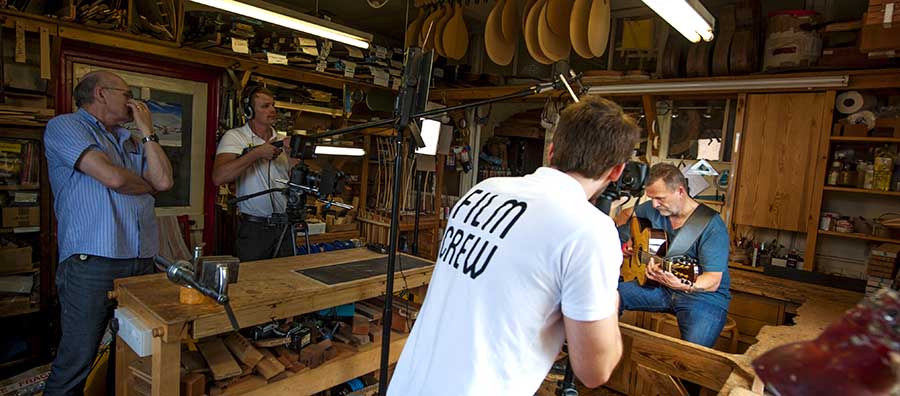
Trevor, John and Tom filming Martin playing his Martin Simpson Signature Sobell in my workshop
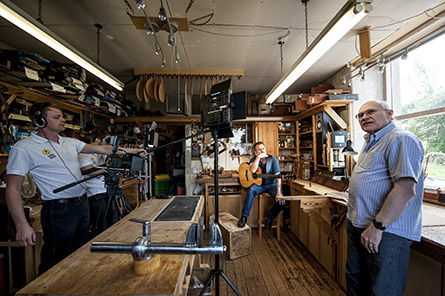
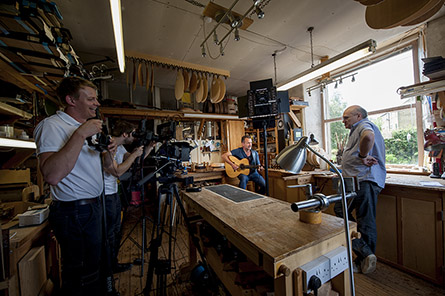
Another couple of pictures of Trevor and the boys. Outside the sun was shining; early June is the most wonderful part of the year in Northumberland
Martin also brought me the African Blackwood New World guitar he is selling to look over. It’s perfect and as new. Pictures up soon on my ‘available now’ page.

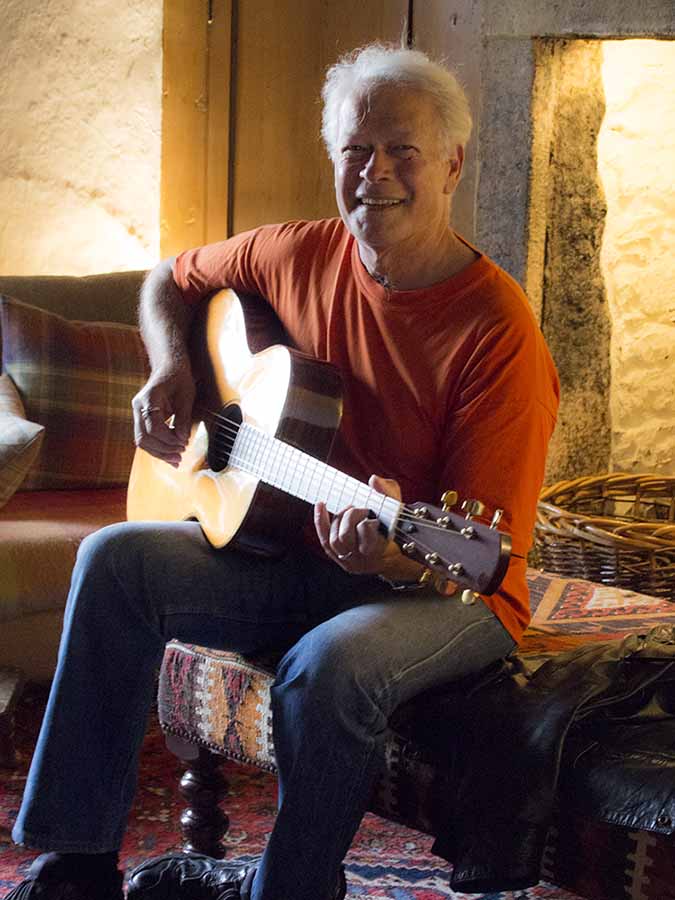
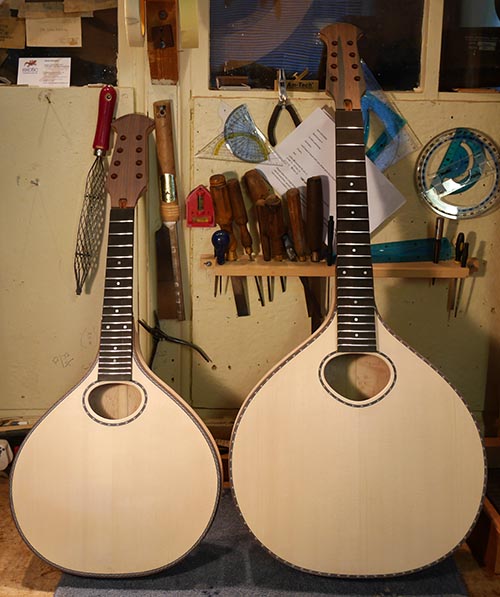
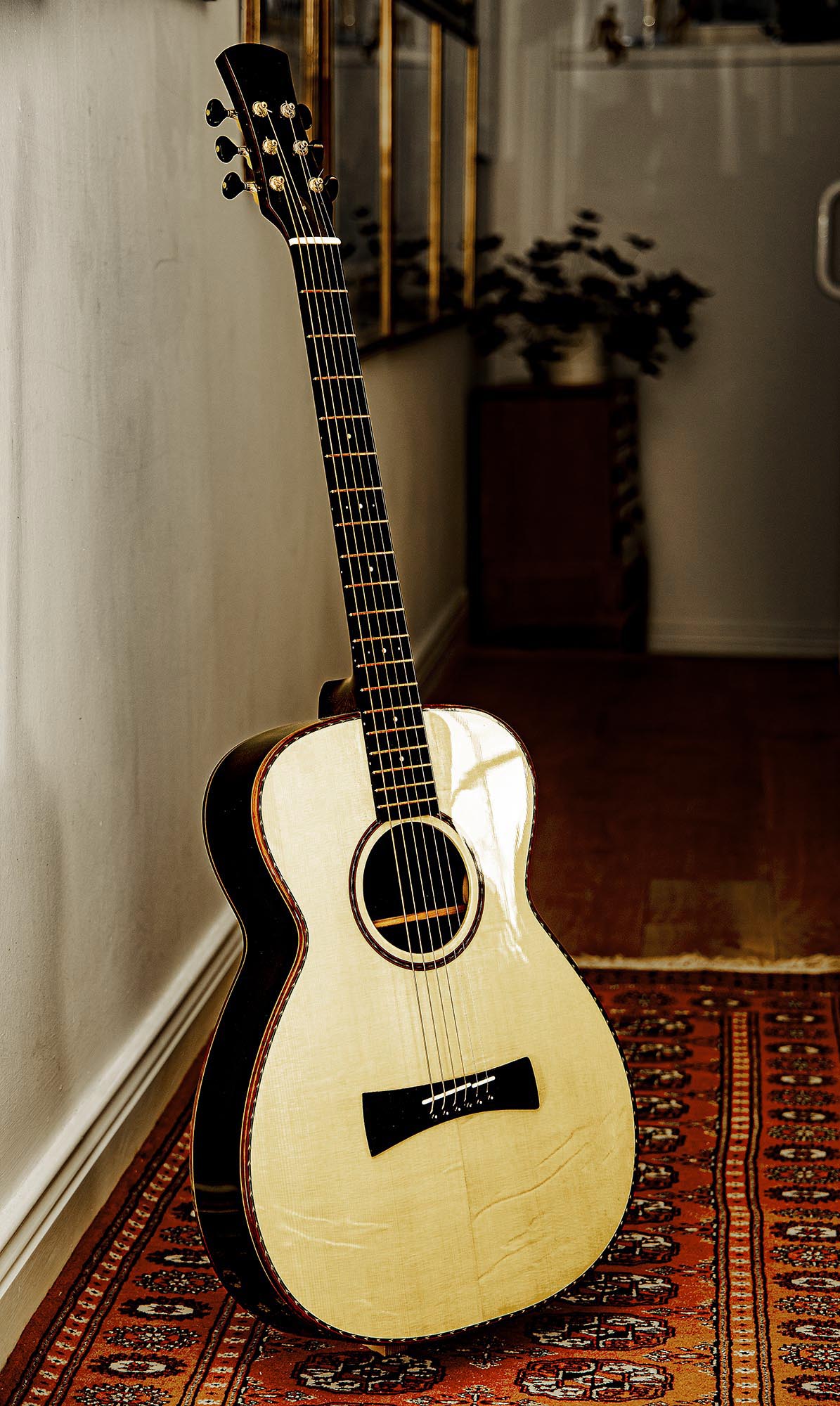 2020 German spruce and African Blackwood Model 2D.
2020 German spruce and African Blackwood Model 2D.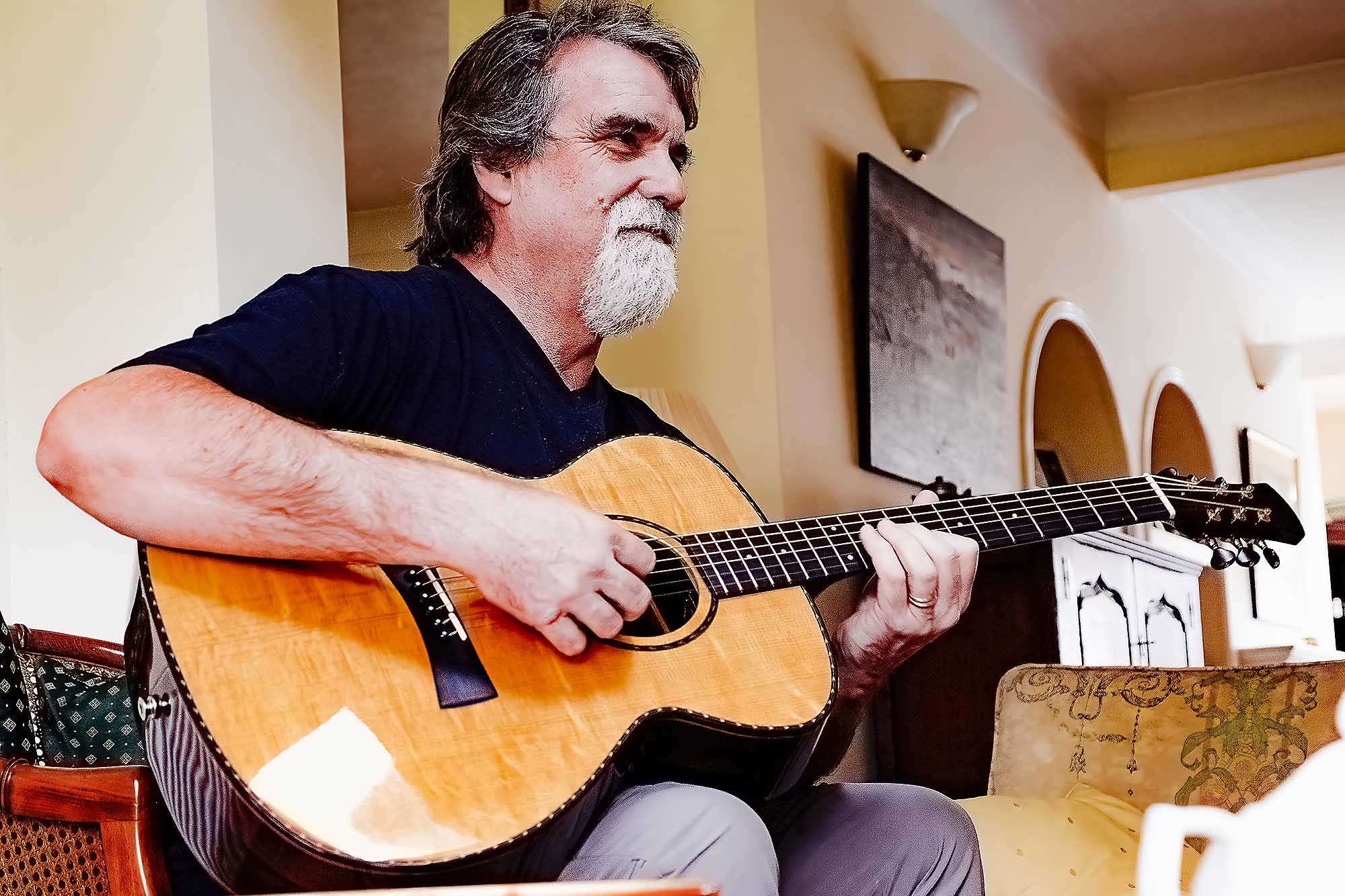 Darrell Scott in 2019 playing his 2D. He tunes it a tone and a half below standard, making it a C# guitar.
Darrell Scott in 2019 playing his 2D. He tunes it a tone and a half below standard, making it a C# guitar.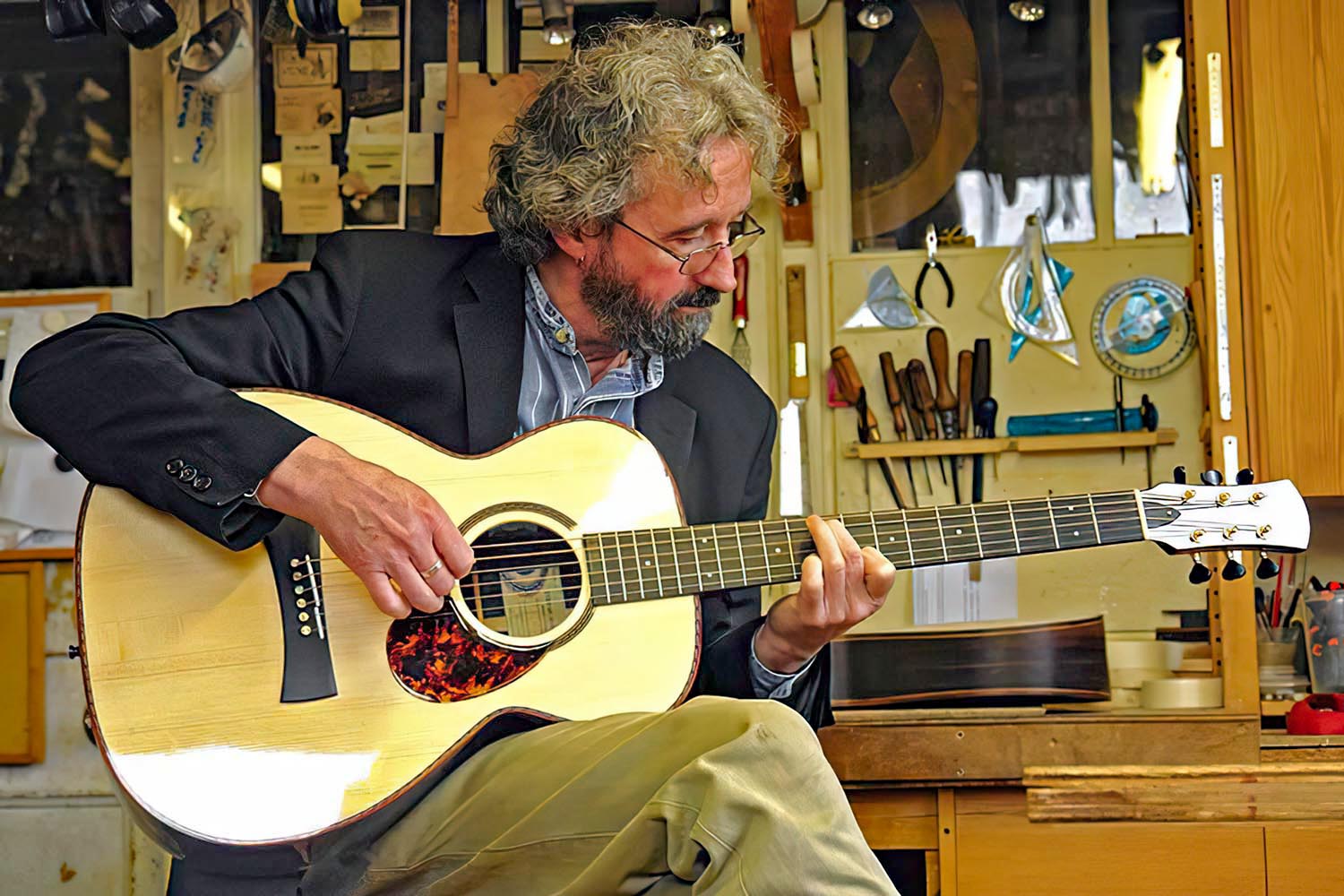 Maurice and his 2015 2D ‘Still loving the guitar. It has become my most used live guitar. It really does do everything.’
Maurice and his 2015 2D ‘Still loving the guitar. It has become my most used live guitar. It really does do everything.’ 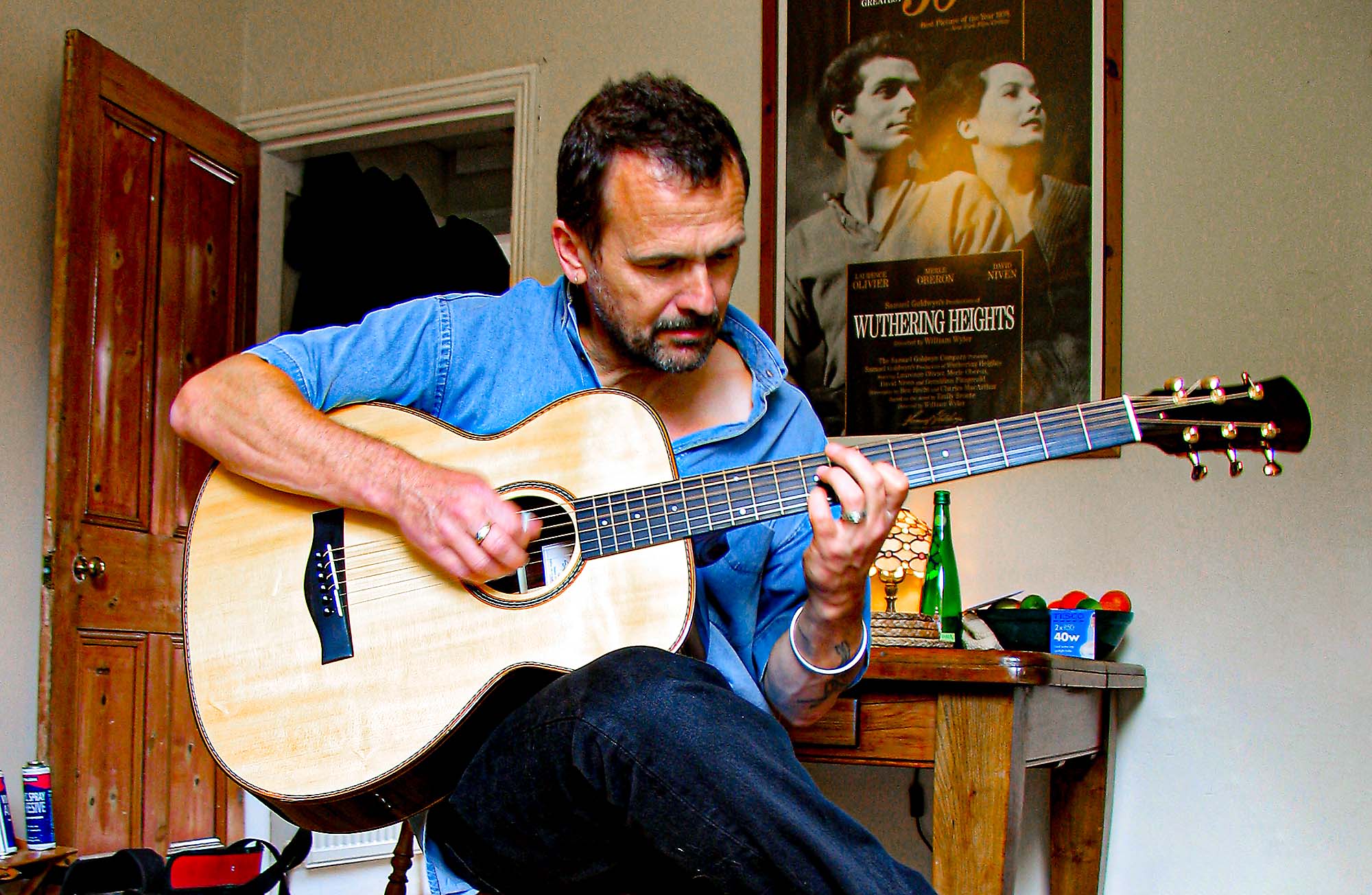 Martin Simpson playing the original Model 1 Sicilian based D guitar in 2004
Martin Simpson playing the original Model 1 Sicilian based D guitar in 2004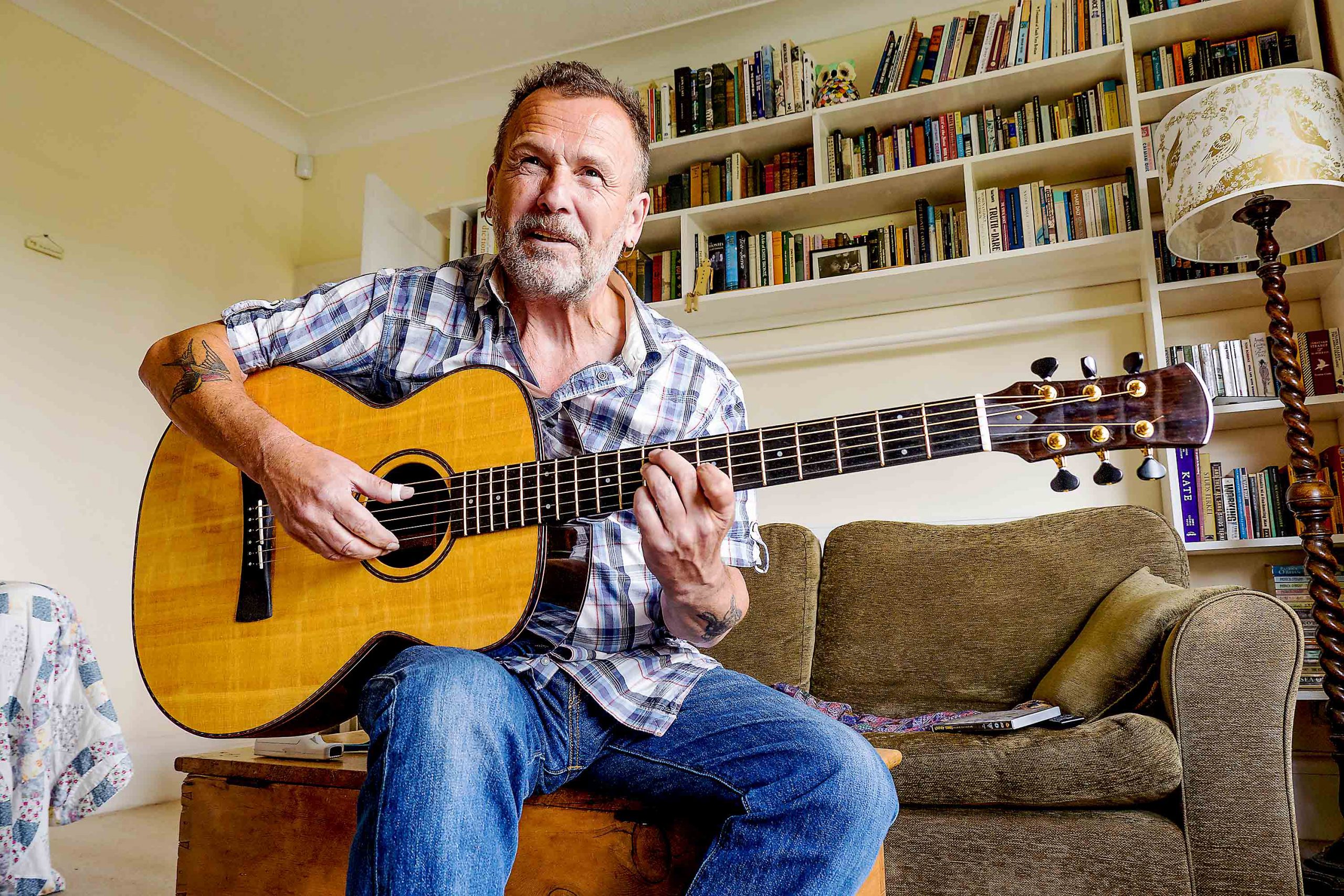 ‘This is one of the very best guitars you’ve built, which means it’s one of the best guitars on the planet’ Martin Simpson with 2D July 2016
‘This is one of the very best guitars you’ve built, which means it’s one of the best guitars on the planet’ Martin Simpson with 2D July 2016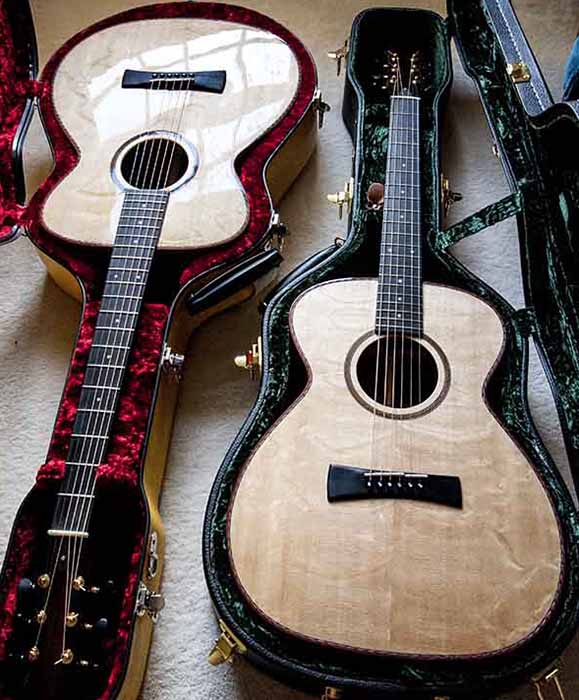 For many years I’ve not used Sitka spruce for soundboards, having had indifferent success with it when first building instruments. However, it turns out there is Sitka and there is Sitka.
While visiting Pacific Rim Tonewoods in the Cascade Mountains near Seattle I saw sets of lovely looking Sitka spruce, both straight grained and figured. They looked so good I bought two of each, and I’ve recently built two guitars using the figured sets.
These are a Martin Simpson D model (long scale tuned a tone low) and a New World model, both with African Blackwood back and sides, Wengé necks, ebony fingerboards and bridges, and figured Sitka soundboards. Both are a rich colour and extravagantly figured. And they sound wonderful; I’m so pleased to have another combination of woods I’m really happy to offer.
I plan to keep the D model for a while, but sell the New World model (see my ‘available now’ page).
For many years I’ve not used Sitka spruce for soundboards, having had indifferent success with it when first building instruments. However, it turns out there is Sitka and there is Sitka.
While visiting Pacific Rim Tonewoods in the Cascade Mountains near Seattle I saw sets of lovely looking Sitka spruce, both straight grained and figured. They looked so good I bought two of each, and I’ve recently built two guitars using the figured sets.
These are a Martin Simpson D model (long scale tuned a tone low) and a New World model, both with African Blackwood back and sides, Wengé necks, ebony fingerboards and bridges, and figured Sitka soundboards. Both are a rich colour and extravagantly figured. And they sound wonderful; I’m so pleased to have another combination of woods I’m really happy to offer.
I plan to keep the D model for a while, but sell the New World model (see my ‘available now’ page).
